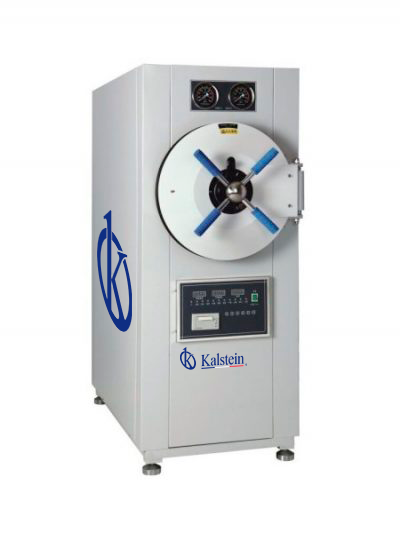Double door autoclaves are a special type of autoclave used in clean rooms and containment suites. In the case of a clean room application, the autoclave is used for the sterilization of equipment entering a clean or aseptic area, such as a pharmaceutical production environment. In the case of a containment application, the autoclave is used for the decontamination of the material prior to its release from the containment assembly, which would normally be a laboratory handling high-risk hazardous materials. In both cases, isolation of both ends of the autoclave is required. The autoclave will be sealed at the point of passage through a wall.
How is the door operation on these devices?
An essential requirement is that double-ended autoclaves have interlocks to prevent both doors from opening at the same time, as this would obviously violate the integrity of the site. Additionally, there must be an interlock to prevent the door at the discharge end from opening until the sterilization cycle has been successfully completed and the load is safe to move to the discharge end. It is also necessary to avoid releasing the loading door until the unloading door has been opened, then closed and locked. Typically, an override is installed to allow the loading door to be opened if necessary and only by means of a key, to prevent unauthorized operation.
What is the purpose of these teams?
These continuous double door autoclaves are specially designed for airtight installation in partition walls and are therefore equipped with two doors. For the most demanding clean room and safety requirements, such as in biological safety laboratories: Installation as a sterilization and transfer lock to protect the external environment, as well as for clean rooms in laboratories and production areas to reliably protect the cleanroom conditions, separating clean and dirty areas.
How does an autoclave work?
Autoclaves work by allowing the entry or generation of water vapor but restricting its exit, until an internal pressure of 103 kPa is obtained, which causes the steam to reach a temperature of 121 degrees Celsius. A typical sterilization time at this temperature and pressure is 15-20 minutes. The most modern autoclaves allow processes to be carried out at higher temperatures and pressures, with standard cycles of 134 ° C at 200 kPa for 5 min to sterilize metallic material; They even carry out vacuum cycles to accelerate the drying of the sterilized material.
The fact of containing fluid at high pressure implies that the autoclaves must be of solid manufacture, usually of metal, and that they must be constructed completely hermetic. Autoclaves are widely used in laboratories, as an elementary measure of material sterilization. Although it should be noted that, because the process involves high-temperature steam, certain materials cannot be autoclaved, such as paper and many plastics (with the exception of polypropylene).
At Kalstein we have an excellent range of autoclaves designed to the highest quality. That is why we invite you to take a look at HERE

